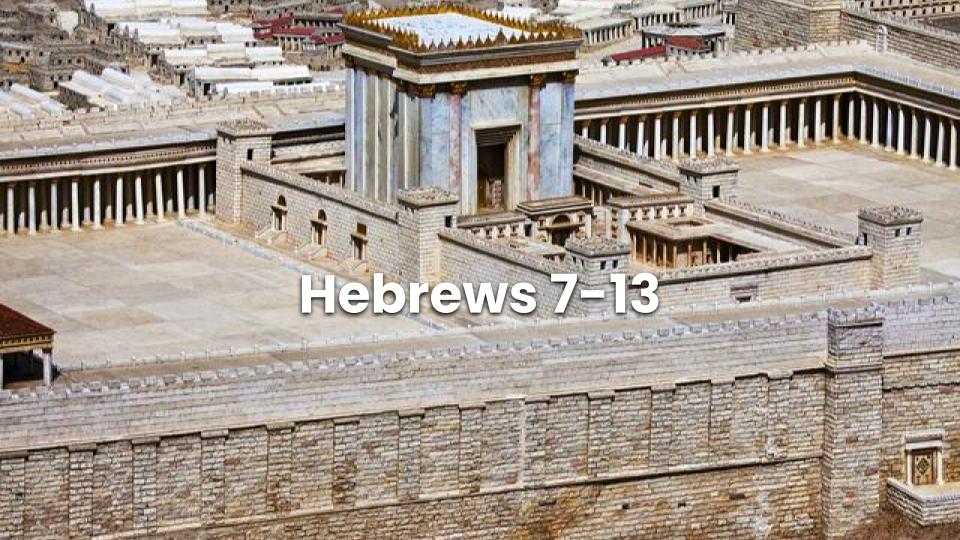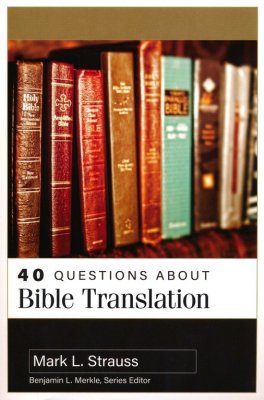Here are some ideas for learning and teaching a few of the great principles in Hebrews 7-13. And while you’re here, I recommend you check out my free online course, “Seeking Jesus.”
Videos for Hebrews 7-13
“The Veil of the Temple Represents Jesus” **Highly recommended short clip from Seeking Jesus**
Hebrews 9:11 speaks of Jesus Christ as “an high priest of good things to come.” Elder Jeffrey R. Holland gave a powerful talk on this subject, I especially like this 5-minute video, which features a personal experience he shared in this talk.
The Bible Project videos are helpful for getting a big picture, in this case, of the Book of Hebrews.
Ideas for Learning More About Hebrews 7-13
***Jesus Christ is the Veil of the Temple***
In a recent BYU Devotional (it’s a must-watch), Elder Allen D. Haynie shared a previously unpublished quote from President Russell M. Nelson. President Nelson taught, “Your garment is symbolic of the veil [of the temple]; the veil is symbolic of the Lord Jesus Christ. So when you put on your garment, you may feel that you are truly putting upon yourself the very sacred symbol of the Lord Jesus Christ—His life, His ministry and His mission, which was to atone for every daughter and son of God.”
What a powerful quote! Hebrews helps us learn more about this important teaching.
The Tabernacle, Solomon’s temple, and the temple in the time of Christ all had a similar design where there were different zones of increasing holiness. There was the outer courtyard where sacrifices were offered, and then a curtain or veil separating the outer courtyard from the holy place. In the holy place were some sacred items, and only priests were allowed to enter the holy place.
Another curtain separated the holy place from the most holy place or the Holy of Holies. This is where the Ark of the Covenant was placed. It represented the place where God lives. This part of the temple was so sacred that it was only entered once per year, and only by the high priest. On this day, known as the Day of Atonement, the high priest would sacrifice a goat and sprinkle the goat’s blood in the holy of holies to make “an atonement for . . . all the congregation of Israel” (Lev. 16:17).
The high priest’s sacrifice represented Jesus Christ. As the author of the book of Hebrews points out, the high priest would enter “the Holy Place year after year with blood that is not his own” (Hebrews 9:25, NRSV), but this these sacrifices “can never take away sins” (Hebrews 10:11, NRSV). Instead, Jesus “entered once for all into the Holy Place, not with the blood of goats…but with his own blood, thus obtaining eternal redemption” (Hebrews 9:12, NRSV).
What does this have to do with the temple garment? Note that the veils in the ancient temple separated holier places from less holy places, and that the holy places had restricted access. Keeping that context in mind, remember that when Jesus Christ was crucified, “the veil of the temple was rent in twain from the top to the bottom” (Mark 15:37–38). What meaning might we make of this idea that the veil of the temple is torn in two at the death of Christ?
Here’s how Elder Bruce R. McConkie explained it: “The Holy of Holies is now open to all, and all, through the atoning blood of the Lamb, can now enter into the highest and holiest of all places, that kingdom where eternal life is found…The ordinances performed through the veil of the ancient temple were in similitude of what Christ was to do, which he now having done, all [people] become eligible to pass through the veil into the presence of the Lord to inherit full exaltation.” Does this idea make sense? Before, the veil blocked access to the holy place where God lives, but at the death of Christ, the temple veil was torn in two, and now all have access to the presence of God through Jesus Christ.
Let’s go one step further. In modern temples, there’s a veil that separates the endowment room from the celestial room. To enter the celestial room, which could represent the place where God lives, those participating in the endowment ceremony go through the veil. That idea takes on added meaning when we remember that the author of the Book of Hebrews says: “Having therefore… boldness to enter into the holiest by the blood of Jesus, by a new and living way, which he hath consecrated for us, through the veil, that is to say, his flesh” (Hebrews 10:19–20).
So in Hebrews we see that the veil of the temple can represent the flesh of Jesus Christ. In an endowment ceremony, as we enter the celestial room, there is symbolism showing that it’s through the flesh of Jesus Christ we can come into the presence of God. The veil of the temple is a powerful symbol of Jesus Christ.
Let’s take this symbolism one step further by noting the similarity between the veil of the temple and the temple garment. This might make more sense to those who have already been endowed, but there are connections between the temple veil and the temple garment (with, as Elder Carlos Asay said, its “several simple marks”). The parallels between the temple veil and the temple garment suggest that the garment is connected to the veil, indicating that the garment itself as a powerful symbol of the body of Jesus Christ that he laid down for each of us.
When we see the temple garment, we can see a piece of clothing that we commonly wear. Or we can see a coat of skins, representing Christ’s Atonement. Or we can see the veil of the temple, a symbol of the sacrificed body of Jesus Christ. When we see the Savior in our temple garments, it can change the way that we view and treat them. It can also increase the power we feel from the Lord in our daily lives.
**Note–if you haven’t received your endowment, but are planning to do so, you might benefit from this video on preparing to receive your endowment.
***Cast Not Away Your Confidence***
The author of the book of Hebrews wrote to a group of Christians who had endured extreme persecutions because of their belief in Christ. For example, an ancient Roman historian recorded that in 64 AD “[The Emperor] Nero . . . inflicted the most exquisite tortures on . . . Christians. . . . Mockery of every sort was added to their deaths. Covered with the skins of beasts, they were torn by dogs and perished, or were nailed to crosses, or were doomed to the flames and burnt.”
These people truly had reason to fear! To early Church members who faced persecution, the author of Hebrews gave two important messages that can help us when we are afraid: stay confident, and remember past miracles (discussed below, under “Greatest Hits of Faith”).
The first message was to stay confident. We read, “Let us hold fast the profession of our faith without wavering. . . . Not forsaking the assembling of ourselves together. . . . Cast not away therefore your confidence, which hath great recompense of reward. For ye have need of patience, that, after ye have done the will of God, ye might receive the promise. . . . We are not of them who draw back. (Hebrews 10:23–39).
Multiple times the author of Hebrews says, “Don’t let your fear cause you to give up. Yes, things are hard; yes, it looks bad now; but don’t quit. Things will work out.”
One of the all-time greatest talks is Elder Jeffrey R. Holland’s talk, “Cast Not Away Your Confidence.” I definitely recommend watching all of it, and if you’re teaching, showing relevant excerpts
***Your Greatest Hits of Faith***
Following the exhortation to “Cast not away your confidence,” the author of Hebrews provides what we might call a “greatest hits of faith,” in which he reviews many of the miracles that took place among the ancients. This highlights a second key message for when we are afraid: remember the miracles we have seen.
We read of the faith of Abel, of Enoch’s translation, how by faith Noah built an ark even though it wasn’t yet raining, the faith of Abraham in seeking the promised land, and how Moses accepted the call to be a prophet (see Hebrews 11:4–25). The author writes, “By faith [the Israelites] passed through the Red sea as by dry land: which the Egyptians assaying to do were drowned. By faith the walls of Jericho fell down, after they were compassed about seven days” (Hebrews 11:29–30). As we read about these miracles from the past, we receive assurance that there will be future miracles as well. Why do we need such a list of previously performed miracles? Because we often forget the great things God has done for us.
In order to remember the miracles I’ve seen, I’ve mimicked the book of Hebrews by making my own “greatest hits of faith,” recounting miracles I have personally seen. I wrote it in a similar style to Hebrews 11—I touched on the experience, but did not mention the details. You could create your own list whether in this style, or simply with bullet points. This might also be a good activity to do with family members or other learners. Here are some excerpts from my list:
“By faith, I saw my brother healed when I was only a small boy. By faith, I found my key amidst a multitude of 1,000. By faith, Jeff and Ed McGee were baptized, bringing great joy to their family and helping me start my own. By faith, my wife and I were able to move Mexico, which positively influenced our family. By faith, we found success in the set-a-date program multiple times as we helped others be baptized. By faith, we found housing in Cambridge when no good options seemed available. By faith, we were able to sell our home in Miami during a housing crisis. By faith, we found an incredible opportunity that allowed our family multiple opportunities to live in China, after following a prompting to learn Chinese…”
As with Hebrews 11, a faith-promoting miracle lies behind each of these short sayings. Looking at these miracles collectively shows the Lord’s hand in my life and helps me walk confidently toward an uncertain future. When I face new fears, I can look back at these miracles and take courage to not cast away my confidence.
After the author of Hebrews recounts these many miracles, he concludes, “Wherefore seeing we also are compassed about with so great a cloud of witnesses [all of the previous miracles illustrated in Hebrews 11], let us lay aside every weight, and the sin which doth so easily beset us, and let us run with patience the race that is set before us, looking unto Jesus the author and finisher of our faith” (Hebrews 12:1–2). We can do the same thing in our lives: having reestablished in our minds the miracles that God has done, both in scripture and for us personally, we can cast aside fear and press forward with our eyes fixed on Christ, knowing that from an eternal perspective, things will work out. We do not need to be afraid.
***Additional Resources***
“‘By His Own Blood He Entered in Once into the Holy Place”: Jesus in Hebrews 9,” by Richard D. Draper.
“Belief in a Promise: The Power of Faith,” by Jeffrey W. Carter
***
I hope these resources are helpful to you in your learning and teaching this week!
Do you want more learning and teaching tips for Come Follow Me? Follow me on Instagram or sign up here for emails with insights on Come Follow Me.





